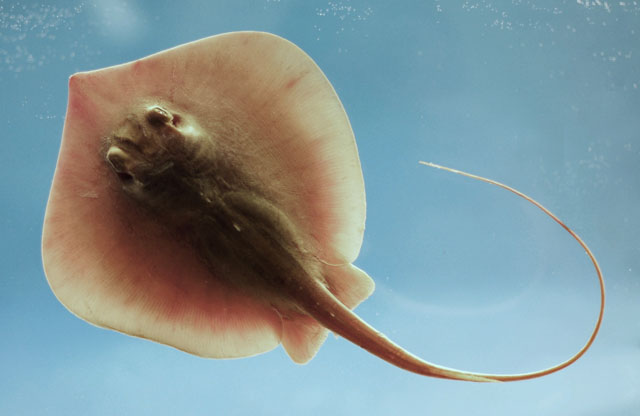| Dasyatidae (Stingrays), subfamily: Dasyatinae |
| 61 cm WD (male/unsexed); max.weight: 4,870.0 g |
|
demersal; freshwater; brackish; marine; depth range 2 - 25 m |
| Western Atlantic: Chesapeake Bay to southern Florida in the USA and the Gulf of Mexico. Records from South America doubtful (Ref. 7251). |
|
Prominent triangular snout. Broadly rounded outer corners of disc. Upper surface brown or yellowish brown, paler toward margins of disc. Lower surface white (Ref. 6902). Few scapular spines. Middorsal row of spines present, but few on tail beyond pelvic fins (Ref. 7251). |
| Adults inhabit coastal waters, including estuaries and lagoons (Ref. 12951) and ascend rivers (Ref. 12951). They feed on tube anemones, polychaete worms, small crustaceans, clams, and serpent stars (Ref. 12951). Ovoviviparous (Ref. 50449). Parturition occurs in July and August (Ref. 27549). Litters of 2-3 pups; gestation 4 months (Ref. 114953). |
|
Least Concern (LC); Date assessed: 21 June 2019 Ref. (130435)
|
| harmless |
Source and more info: www.fishbase.org. For personal, classroom, and other internal use only. Not for publication.
